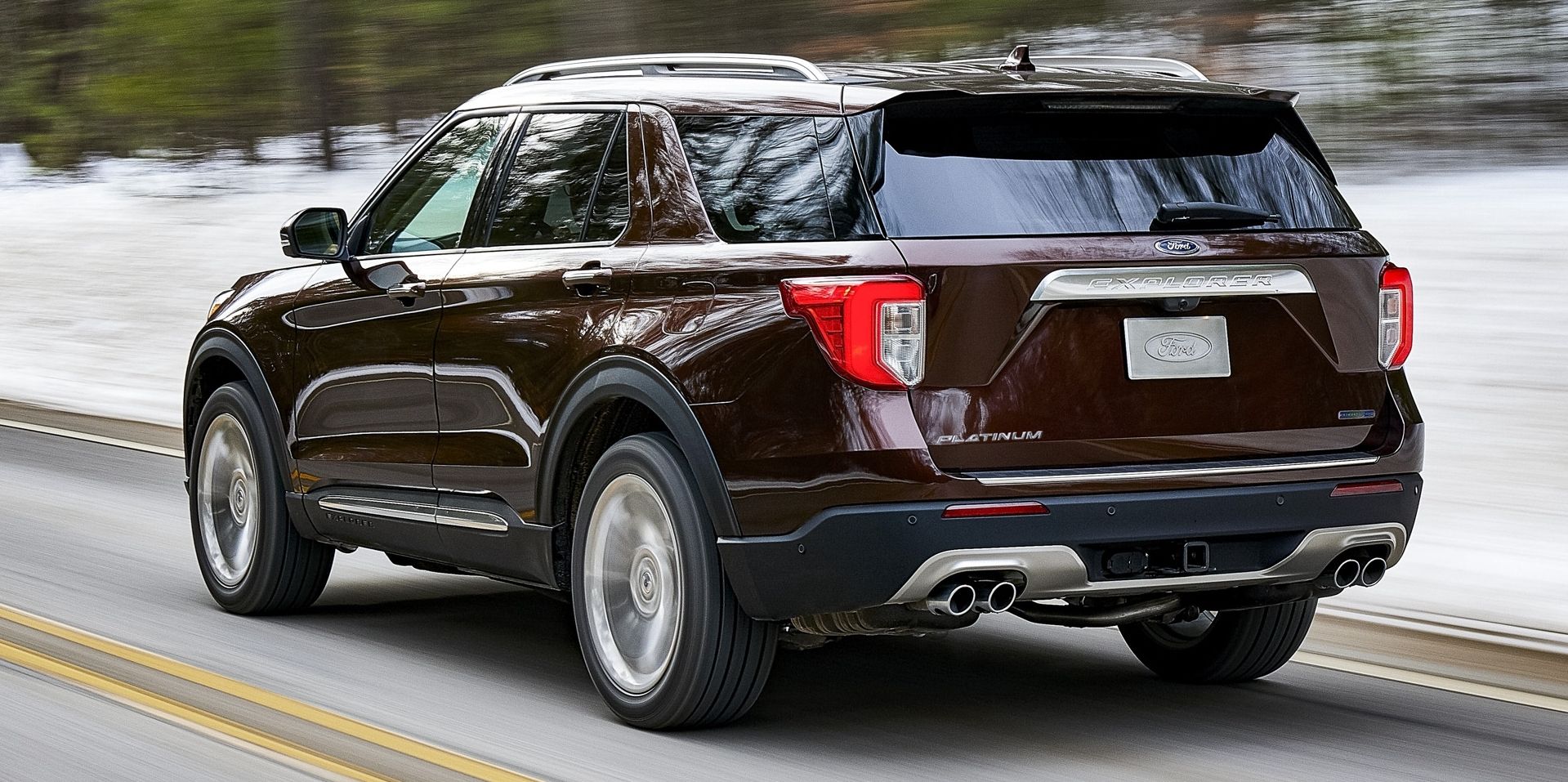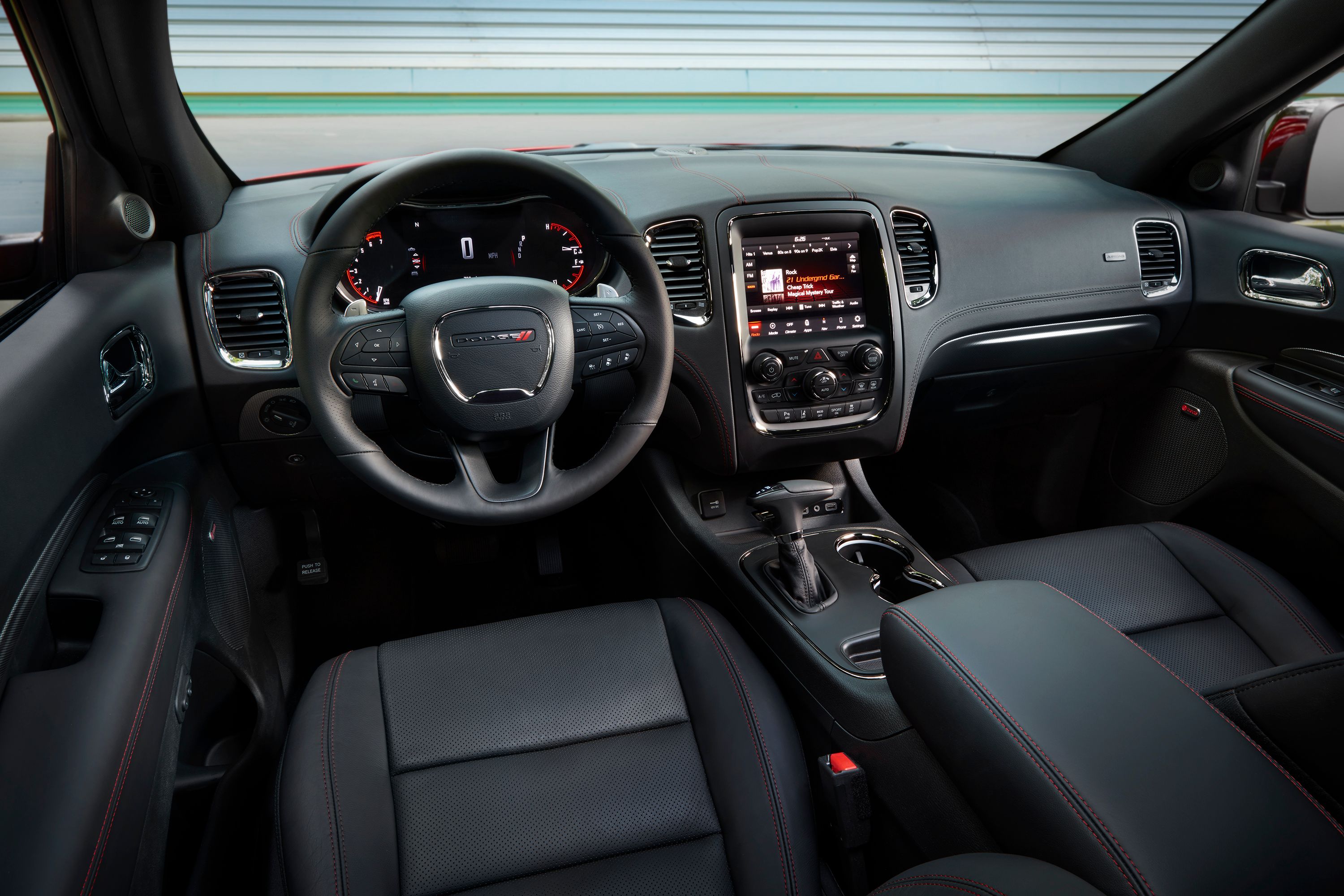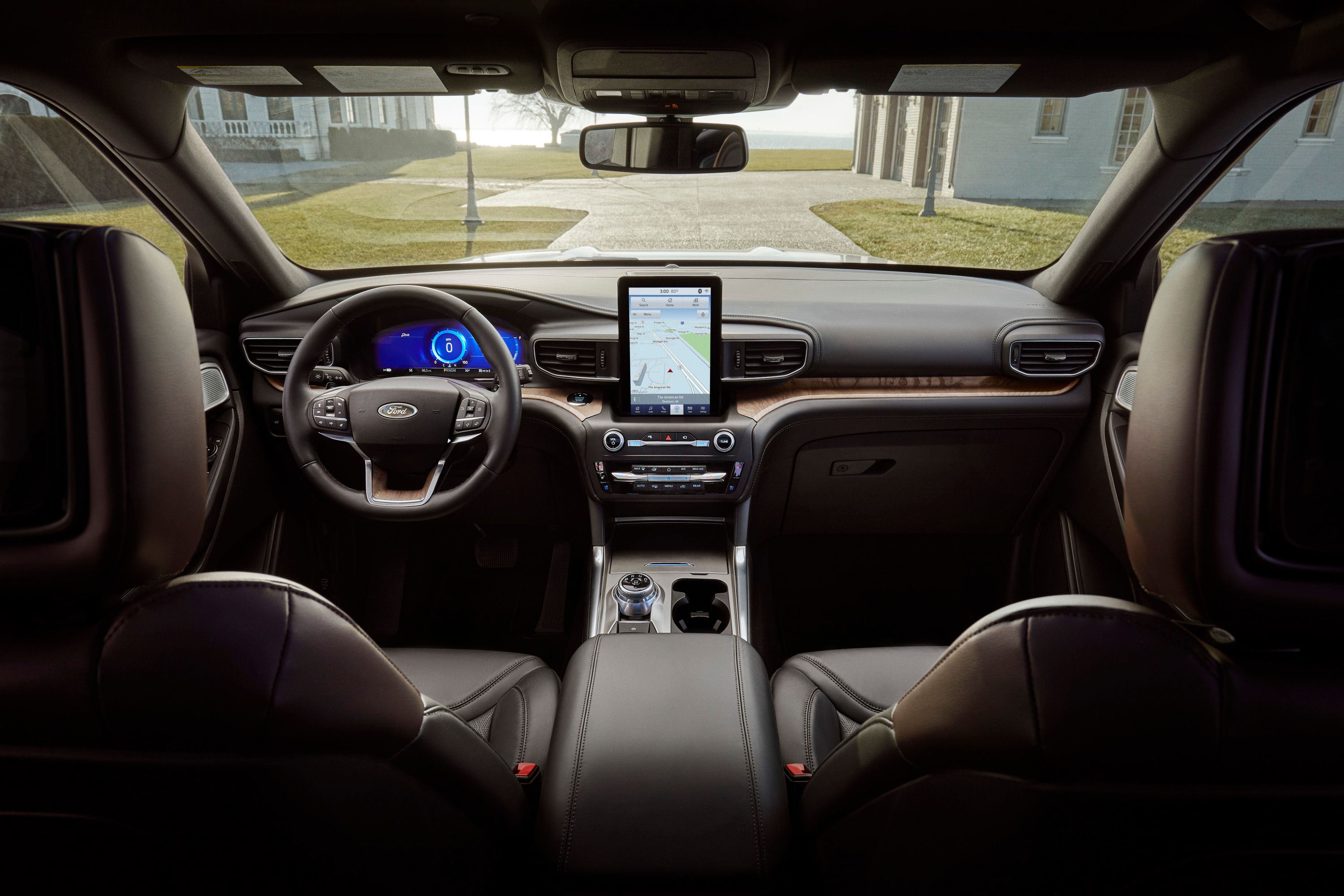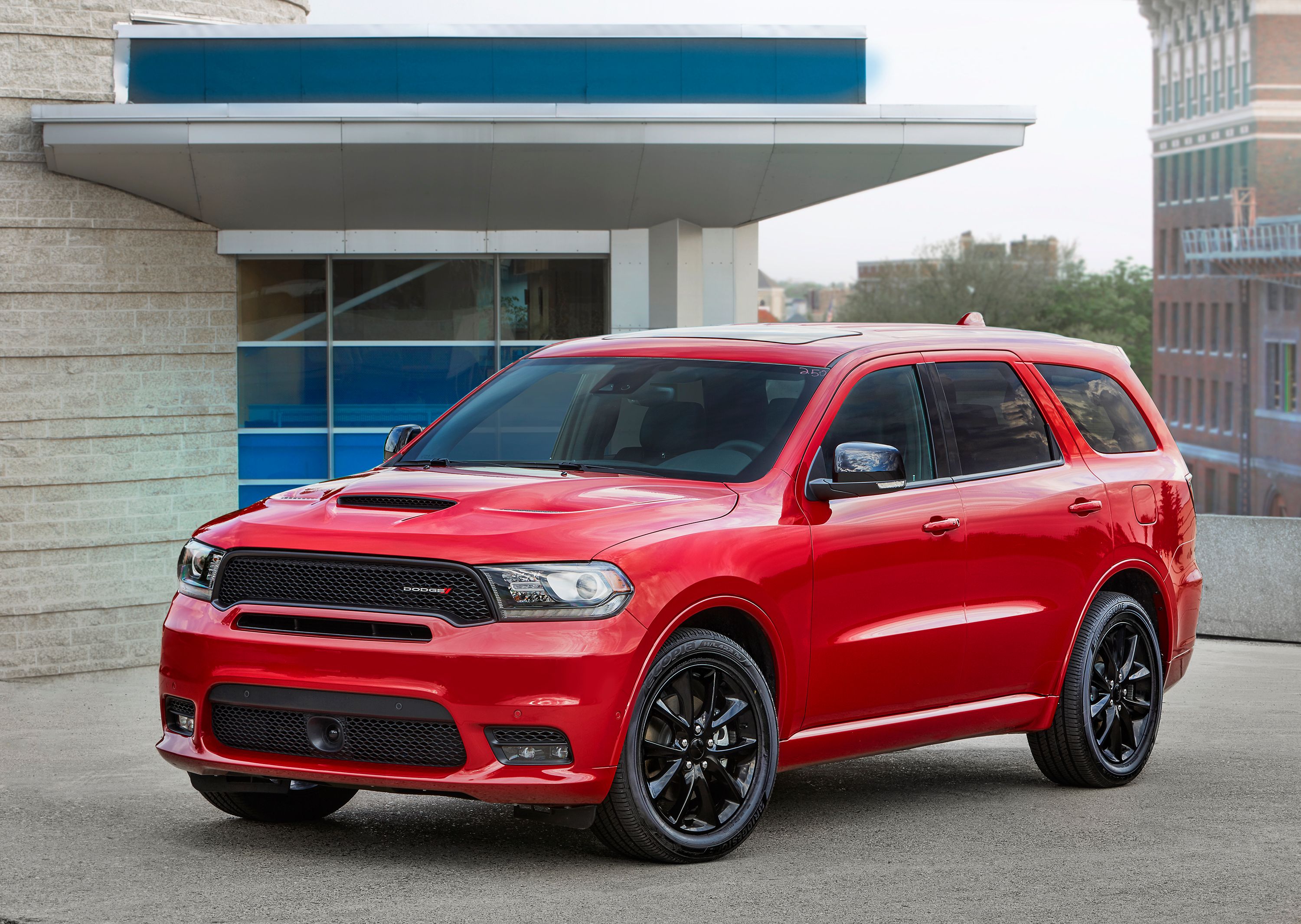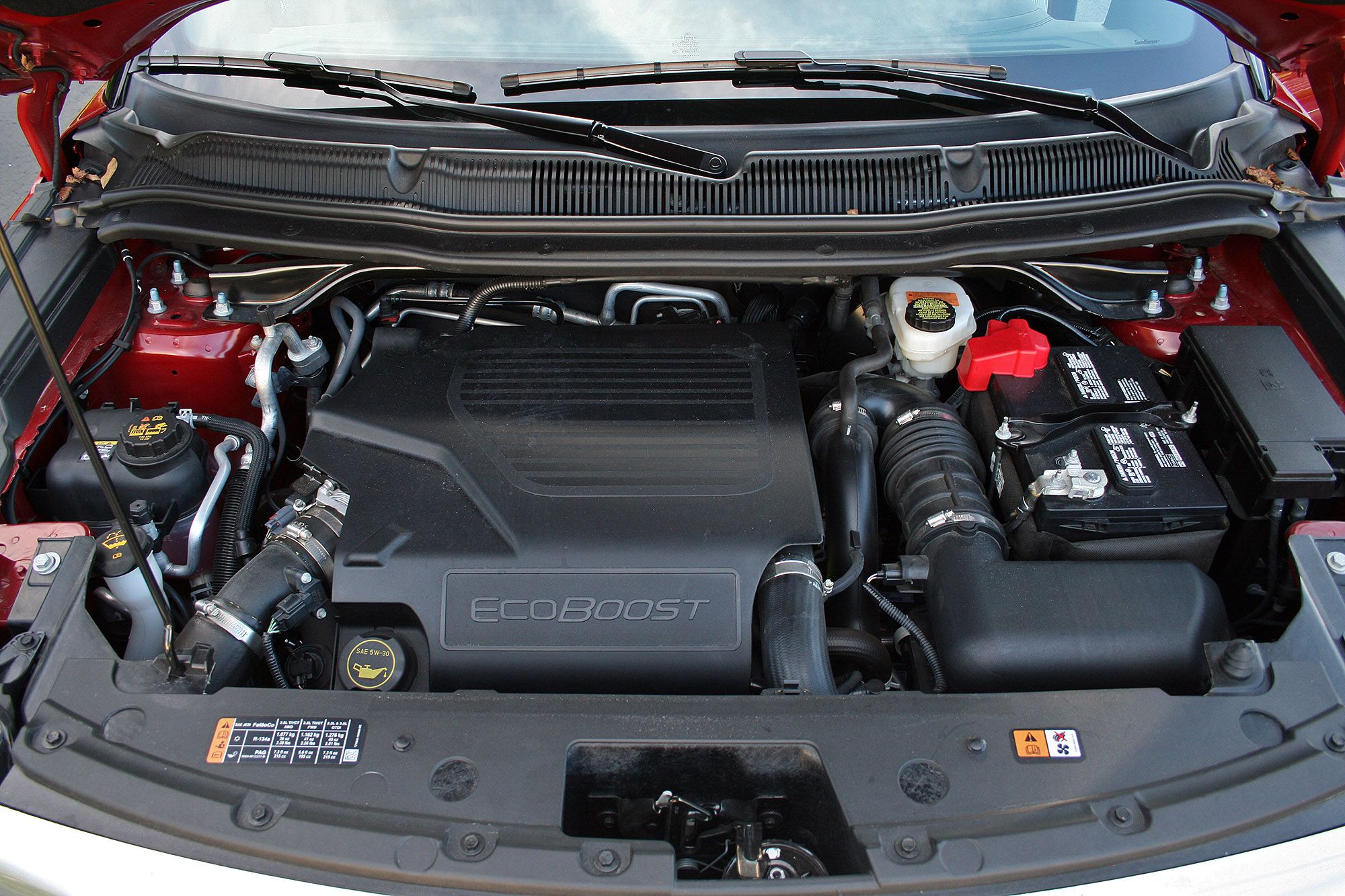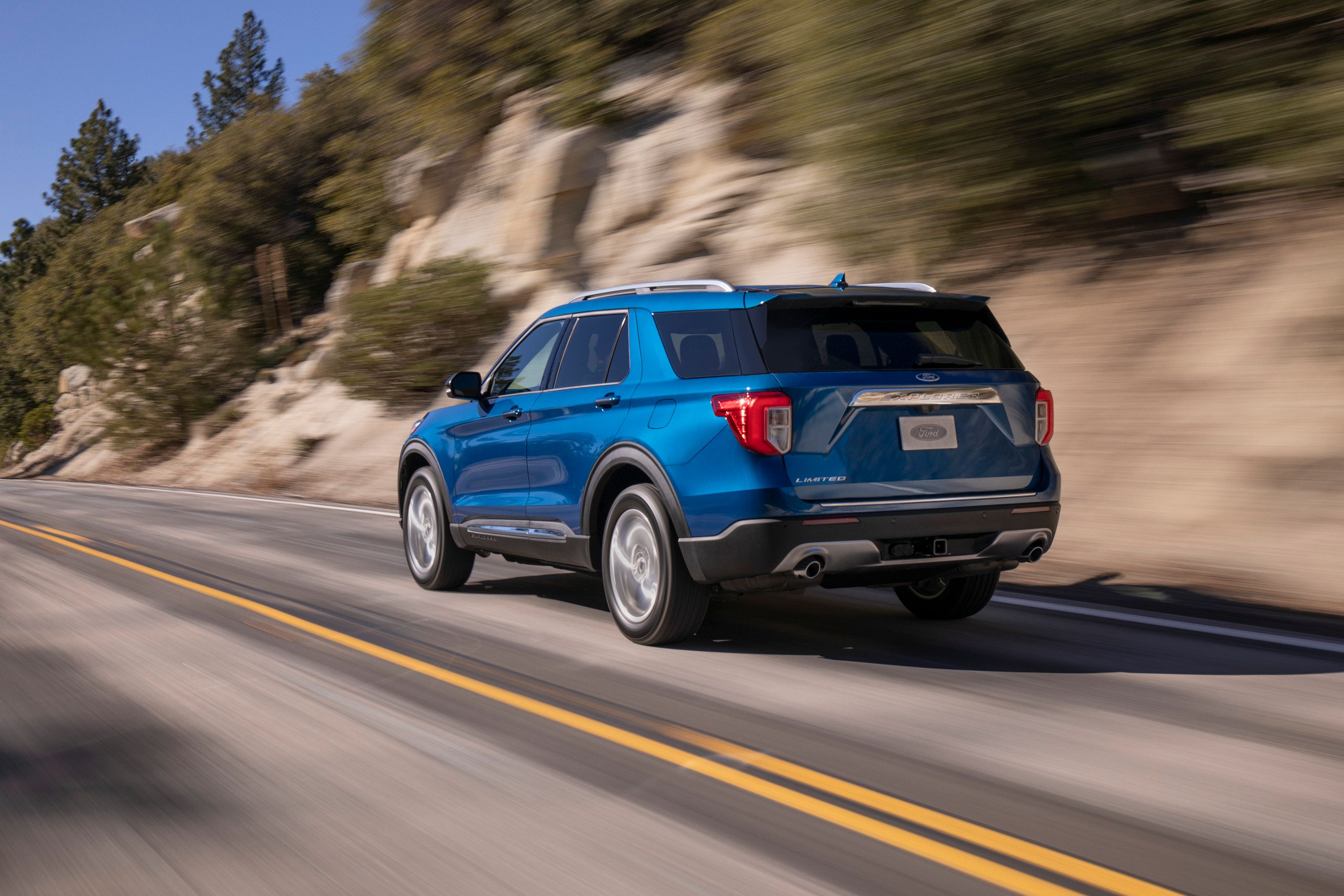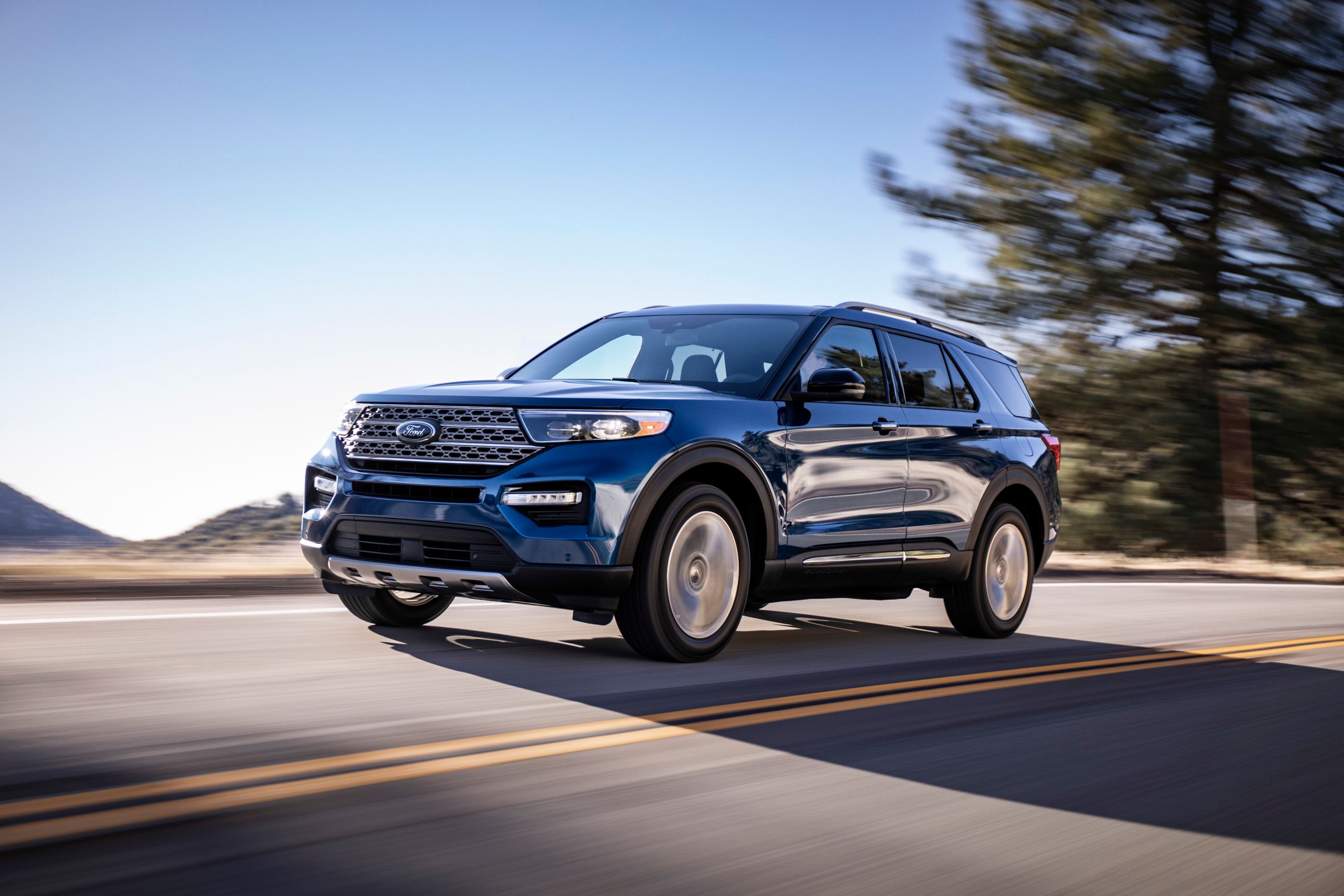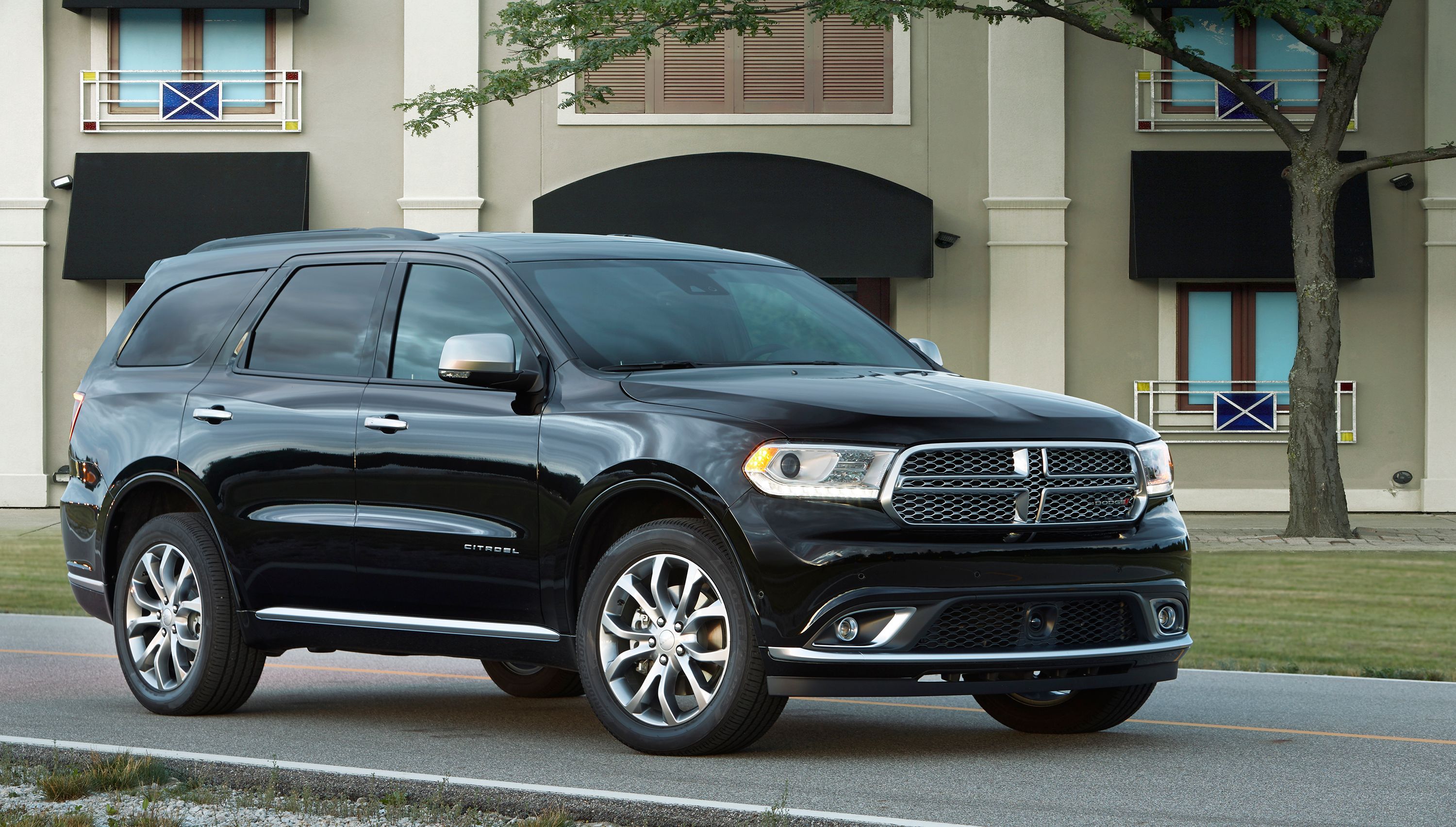The Ford Explorer remains one of the most popular SUVs in America, but the previous-generation model had one thing going against it: age. It entered the market in 2011, and while a 2018 facelift injected some life back to the SUV, it was only a matter of time before Ford ultimately replaced it with a next-generation model. Well, that time has come. The sixth-generation Ford Explorer made its long-awaited debut at the 2019 North American International Auto Show, and it didn’t take long for the SUV to serve notice to its rivals. The Explorer is back, baby, and it’s back with a vengeance. That should serve as a warning to Dodge and its Durango SUV. Just like the Explorer is to Ford, the Durango is one of Dodge’s biggest moneymakers. Unlike the Explorer, the current version of the Durango is toiling on the back-end of its generational cycle. The next-generation Durango is coming, but there’s no specific timetable on when it’s poised to arrive. So as the all-new Ford Explorer flexes its muscles in the segment, the current Durango has to resist the Explorer rush, at least until the cavalry arrives. Is it up to the task against the all-new Ford SUV? Let’s find out.
Exterior
|
|
ids=813506,824954 |
no_overlay=true> |
Give the Dodge Durango credit for this. Even if it is, technically, an eight-year-old model, it doesn’t look like one. That’s a nod to Dodge’s continued attempts to keep the Durango looking as fresh as can be. You’ll notice that as Dodge’s design language has evolved throughout the decade, the Durango’s design has kept pace with those changes. It started out with a cross-design front grille, but when Dodge did away with that look, it gave the Durango the cleaner-looking grille for the 2018 model. The design and layout of the headlamps haven’t changed since 2014, but the technologies included have been improved.
In terms of size, the Durango still fits the bill of a three-row SUV. It’s actually longer than the 2020 Ford Explorer — 201.2 inches to the Explorer’s 199.3 inches — and while it loses the battle in the width department — 75.8 inches to the Explorer’s 78.9 inches, it makes up for it by being taller, measuring 71.9 inches high compared to the Explorer’s 70.2-inch height.
Unfortunately for Dodge, the Durango’s aesthetics do look a bit outdated, at least when you compare it to the all-new Explorer. So what if the Dodge Durango is longer and taller? You’ll see later on that those advantages actually don’t matter. From a visual standpoint, it’s hard not to see the Explorer and not see it as an all-new model. Everything about its face looks fresh, from the new headlamp and front grille designs to the sporty and aggressive bumper that makes the Durango’s bumper look like a cardboard by comparison. The side and rear profiles of the Explorer also scream for attention in ways the Durango’s design doesn’t.
|
|
ids=824957,824956 |
no_overlay=true> |
Granted, not everyone is enamored with the Explorer’s new looks, but that’s not the point.
It’s remarkable that the Durango can still hold its own in this regard. But if you really want fresh, the all-new, sixth-generation Ford Explorer takes this cake.
|
Wheelbase |
119.1 |
119.8 |
|
Length |
198.8 |
201.2 |
|
Width, mirrors folded |
82.7 |
85.5 |
|
Height |
69.9 |
70.9 |
|
Track, front curb |
66.9 |
63.9 |
|
Track, rear curb |
66.9 |
64.1 |
Interior
I mentioned earlier that the Durango’s size advantage outside over the Explorer doesn’t translate in the interior of both SUVs. This is probably the Dodge’s biggest weakness against the Ford SUV. Simply put, the Explorer has more front headroom — 40.7 inches to 39.9 inches — than the Durango. It’s the same story in the second-row headroom — 40.5 inches to 39.8 inches — and the third-row headroom — 38.9 inches to 37.8 inches. The narrative remains the same in terms of shoulder room.
Unfortunately, it doesn’t get any better for Dodge’s SUV. Cargo space is another important benchmark among SUVs, specifically those that tout themselves as three-row SUVs that, in theory at least, can offer cavernous amounts of cargo area. Between the Explorer and the Durango, the Ford wipes out its rival, and it’s not even close. When all the seats are folded, the Durango offers 17.2 cubic feet of cargo space. That’s actually a lot of room, even among other three-row SUVs.
At this point, the Durango should just throw in the towel, right? Give credit to the Dodge SUV for persevering because it’s not about to give up without a fight. On the tech side of the interior, the Durango boasts a seven-inch touch screen, a six-speaker stereo, a pair of USB ports, Bluetooth compatibility, and the Uconnect infotainment system that features Apple CarPlay and Android Auto. Open up the catalog for extra options and you can upgrade to a larger 8.4-inch touchscreen, a 19-speaker Harman Kardon premium sound system, a Blu-ray/DVD entertainment system, and a suite of other advanced safety features.
The Durango comes with a solid menu of features and options. But, at the end of the day, the Durango is, at its most recent, a facelifted version of a model that’s eight years old. The Explorer, on the other hand, is minty fresh. You only need to take one look at the cabin to realize that it’s a lot cleaner and more sophisticated than the interior of the previous-generation model.
Maybe it’s not all that fair comparing the all-new Explorer to a facelifted, eight-year-old Dodge Durango. But the two are rivals in the segment, and until Dodge brings out the next-generation Durango, this competition isn’t as close as Dodge would like it to be, at least as far as the interior of both SUVs are concerned.
|
Seating capacity |
Seven |
Seven |
|
First-row headroom |
40.7 |
39.9 |
|
First-row legroom |
43.0 |
40.3 |
|
First-row shoulder room |
61.8 |
58.5 |
|
First-row hip room |
59.2 |
57.0 |
|
Second-row headroom |
40.5 |
39.8 |
|
Second-row legroom |
39.0 |
38.6 |
|
Second-row shoulder room |
61.9 |
57.7 |
|
Second-row hip room |
59.1 |
55.5 |
|
Third-row headroom |
38.9 |
37.8 |
|
Third-row legroom |
32.2 |
33.5 |
|
Third-row shoulder room |
54.6 |
50.4 |
|
Third-row hip room |
40.9 |
42.4 |
|
Cargo volume behind first row |
87.8 cu. ft. |
85.1 cu. ft. |
|
Cargo volume behind second row |
47.9 cu. ft. |
43.3 cu. ft. |
|
Cargo volume behind third row |
18.2 cu. ft. |
17.2 cu. ft. |
Drivetrain and Performance
The 2019 Dodge Durango comes with impressive powertrain options that suit a variety of functions. The low-tier SXT and GT trims of the Durango are powered by a 3.6-liter V-6 engine that produces 295 horsepower and 260 pound-feet of torque.
All engine versions are mated to an eight-speed automatic transmission, though as you might expect, fuel mileage differs depending on the size of the engine. The 3.6-liter V-6 engine, for example, returns 19 mpg in the city and 26 mpg on the highway with a rear-wheel drive configuration. Those figures drop a teensy bit to 18mpg in the city and 25 mpg on the highway with all-wheel drive. The 5.7-liter V-8 unit only comes with all-wheel drive, and by virtue of its V-8 muscles, fuel returns drop to 14 mpg in the city and 22 mpg on the highway. Unfortunately, if you’re buying the Durango SRT, you’ll need to prepare for more frequent stops to the gas station. The 6.4-liter V-8 engine returns just 13 mpg in the city and 19 mpg on the highway. The Durango doesn’t return the best bang for your buck as far as fuel economy is concerned. There’s no going around it; those V-8’s are gas guzzlers.
Towing capacity is another hallmark requirement among SUVs like the Durango. Fortunately, the Dodge not only holds its own against the competition; it actually has one of the highest ratings in its class.
It’s a testament to the growing popularity of SUVs that automakers like Dodge and Ford have no issues offering multiple trim levels and engine options with their people haulers. The Durango’s three-engine lineup isn’t a rare occurrence; it’s actually become the norm. Look no further than Ford to find proof of that.
In keeping with the Joneses, Ford’s also offering a performance-spec version of its SUV, dubbed the Explorer ST. You’ll recognize the “ST” nomenclature from the Focus and Fiesta hatchbacks, but it seems that the Blue Oval’s transitioning it to the Explorer as well. Alas, the Explorer ST features the same 3.0-liter EcoBoost V-6 engine, except that in this setup, the V-6 is tuned to produce an impressive 400 horsepower and 415 pound-feet of torque. Ok, so it’s not as powerful as the Durango SRT, but consider the engine discrepancy between the two. The fact that Ford managed to coax out 400 horsepower and 415 pound-feet of torque out of a V-6 engine is impressive enough on its own.
Ford’s decision to use the “ST” badge on the Explorer also opens up questions on whether an even hotter version of the SUV is in the works. Remember, the Focus ST and Fiesta ST models don’t sit at the top of their lineup. Those spots belong to the RS versions. Is it possible, then, that we could see an Explorer RS in the near future to compete against the Durang SRT? Ford does have a bigger 3.5-liter turbocharged V-6 engine that it can use on the Explorer. It’s already in place under the hood of the F-150 Raptor where it produces 450 horsepower. It’s also the same engine that powers the 647-horsepower Ford GT supercar so clearly, there’s plenty of room there for Ford to play around with.
That said, that’s a story for another time. For now, the new Explorer arrives packing a potent lineup of engines that can compete against the best the segment has to offer, including the Dodge Durango.
|
Engine |
2.3-liter EcoBoost® I-4 |
3.0-liter EcoBoost V6 |
3.6-LITER PENTASTAR V-6 |
5.7-LITER HEMI® V-8 |
6.4-LITER V-8 |
|
Displacement |
140 cu. in. |
183.1 cu. in. |
220 cu. in. |
345 cu. in. |
392 cu. in. |
|
Compression ratio |
10.0:1 |
9.5:1 |
10.2:1 |
10.5:1 |
10.9:1 |
|
Horsepower |
300 |
365 |
293 hp @ 6,400 rpm |
360 hp @ 5,150 rpm |
475 HP @ 6,000 RPM |
|
Torque |
310 lb.-ft. |
380 lb.-ft. |
260 lb.-ft. @ 4,000 rpm |
390 lb.-ft. @ 4,250 rpm |
470 lb.-ft.@ 4,300 rpm |
|
Towing |
5300 |
5600 |
6200 |
7400 |
8700 |
Final Thoughts
The current-generation Dodge Durango is a capable SUV that brings a lot to the table, even if it’s been around longer than it probably should. Dodge has done an impressive job keeping the SUV fresh with regular updates in the exterior and interior of the Durango. The engine lineup is impressive, too. At the very least, there are a lot of options to choose from, and you can make a case for whatever version of the Durango you end up buying. More than any of that, the 2019 Durango is reasonably priced for an SUV of its size. Prices start at less than $30,000 for the base Durango SXT trim and goes all the way up to more than $60,000 for the range-topping Durango SRT. There’s a lot of room in between those price points to choose a particular trim so you’re not getting boxed into picking a version just because it’s the only one you can afford.
Further reading
Read our full review on the 2020 Ford Explorer.
Read our full review on the 2019 Dodge Durango.

